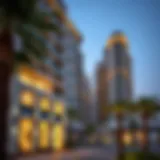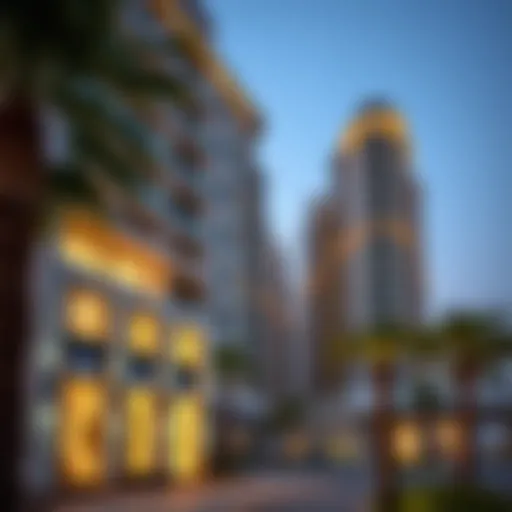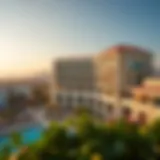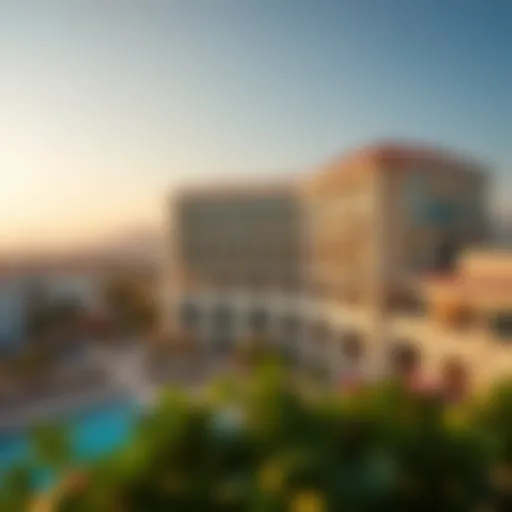Jadaf Metro Station: Key to Dubai's Transport Network
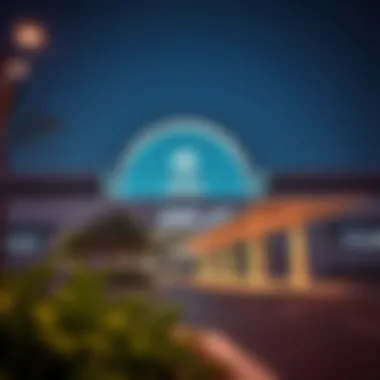
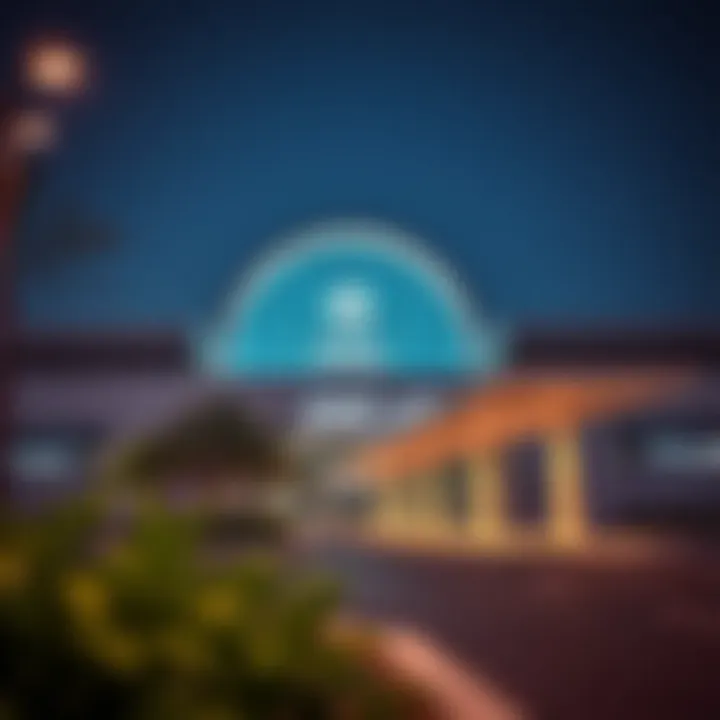
Intro
Navigating through the bustling city of Dubai, Jadaf Metro Station serves not just as a mere stop on the public transport line, but as a crucial connecting point in the urban tapestry of this dynamic metropolis. The station stands as a testament to the growth and evolution of Dubai’s transportation network, symbolizing the city’s ambition toward modernity and efficiency. Its strategic placement highlights the intricate relationship between transport facilities and real estate development in the area, steering urban growth and connectivity with elegance and purpose.
Jadaf Metro Station is nestled within the vicinity of some key attractions and developments, which enhances its importance for both commuters and investors. With tourist hotspots and residential structures emerging around it, understanding the surrounding real estate landscape is essential for anyone interested in the opportunities that arise from such strategic locations.
By examining Jadaf Metro Station's design, accessibility, and its broader impact on the neighborhood's transportation dynamics, we can glean insights into the future trajectory of Dubai's metro system and urban planning efforts overall. The integration of Jadaf Metro Station within the evolving cityscape reflects not just a shift in travel convenience but also provides a lens to view Dubai’s future as a global hub of commerce and culture.
Key Features of Jadaf Metro Station
As one of Dubai's noteworthy transit hubs, the Jadaf Metro Station offers a multitude of features that cater to the ever-evolving transportation needs of the city. Whether you’re a daily commuter or a newcomer exploring Dubai, understanding these key aspects of Jadaf can enhance your travel experience and expand your understanding of the urban landscape.
Architectural Design
The architectural design of Jadaf Metro Station is a commendable blend of innovative aesthetics and functional utility. The structure incorporates modern elements while reflecting the rich cultural heritage of Dubai. For instance, the station's exterior showcases sleek lines and panoramic glass featuring traditional Arabic motifs.
Inside, the space is airy and light-filled, which not only makes the station visually appealing but also creates an inviting atmosphere for travelers. The use of environmentally-friendly materials speaks to the city’s commitment to sustainability. This striking yet practical design isn’t just for show; it’s strategically developed to facilitate smooth passenger flow and reduce congestion, essential in a city that prides itself on efficiency.
Technological Innovations
Tech-savviness at Jadaf Metro Station is hard to miss. The station leverages advanced systems that ensure the safety and comfort of passengers. From automated ticket vending machines to real-time display boards that show train schedules, the integration of technology is comprehensive.
Moreover, Jadaf features sophisticated crowd control measures that utilize AI analytics to monitor passenger flow throughout the day, allowing the station management to optimize operations continuously. The free Wi-Fi access available also enhances the user experience, enabling riders to stay connected while they wait.
Convenience and Accessibility
Jadaf Metro Station is located strategically, offering accessibility that many commuters appreciate. For those who live or work in the surrounding areas, this station serves as a convenient point to hop on the metro and connect with other critical lines. Its proximity to important landmarks further enhances its convenience.
The station is designed with inclusivity in mind, featuring wide entrances, elevators, and clear signage that accommodates all passengers, including those with mobility challenges. Furthermore, connectivity to local bus routes and taxi services means that reaching your final destination is straightforward, liquidating transportation complexities that can often tarnish the urban travel experience.
"Jadaf Metro Station sets a benchmark in transit design. It not only connects places but also people, shaping how Dubai moves forward in urban mobility."
Historical Context of the Jadaf Area
Understanding the historical context of the Jadaf area is essential for comprehending how the Jadaf Metro Station integrates into the overall fabric of Dubai's urban landscape. This part of the city is not just a transit node; it reflects the transformative journey that Dubai has undertaken over the decades. An exploration of Jadaf’s past provides insights into its cultural heritage and its current role as a melting pot of commerce, residential growth, and tourism.
Development Timeline
The roots of the Jadaf area can be traced back to the early days of Dubai’s development. Initially, it served a maritime purpose due to its strategic location along Dubai Creek. As the city expanded, Jadaf transitioned through several phases:
- Early Settlement: The area was predominantly used for shipbuilding and repair due to its proximity to the water, forming part of Dubai's economic backbone.
- Urban Shift in the 1980s: With Dubai’s rapid growth, Jadaf started transitioning to a mixed-use area. New residential buildings and facilities began to emerge.
- Metro Arrival in 2010: The introduction of the Metro system marked a pivotal point in Jadaf's evolution, opening up the area to increased connectivity. The Jadaf Metro Station’s construction became a symbol of modern transportation, linking it to key commercial and residential hubs across the city.
- Current Developments: Recent investments have focused on upgrading infrastructure and enhancing urban living, including recreational spaces. A tangible indicator of this is the recent emergence of waterfront developments that cater to both residents and tourists.
This timeline showcases how Jadaf has continually adapted, changing from a vessel-oriented area to a vibrant urban center.
Cultural Significance
Jadaf holds profound cultural importance that resonates throughout Dubai. It's not just a passageway for commuters; it's interwoven into the rich tapestry of local traditions and modern innovations. Some specific elements that underscore this significance include:
- Beneath the Surface: Jadaf is home to the Dubai Culture and Arts Authority, which hosts numerous arts-related events, adding an artistic flair to the district.
- Community Spirit: The area is characterized by its community-driven activities, such as the annual Dubai Design Week, that resonate with both locals and visitors. Here, art, design, and creativity flourish.
- Diverse Population: A mix of nationalities reside here, contributing to a multicultural atmosphere that shapes daily life. The interactions between communities create a unique social dynamic that reflects the essence of Dubai.
- Architectural Heritage: Noteworthy structures, including traditional dhows, coexist alongside modern high-rises, representing a blend of past and present. This architectural juxtaposition sparks an appreciation for Dubai’s historical journey while ambitiously looking forward.
In essence, Jadaf’s cultural significance cannot be overstated. It stands as a testament to Dubai’s ability to evolve while retaining its historical roots.
"To appreciate where we are, we must first understand where we came from. Jadaf exemplifies this relationship between past and present."
This historical context is fundamental to grasping not only the importance of Jadaf Metro Station but also its potential impact on future developments throughout the Dubai metropolitan area.
Connecting Jadaf Metro Station to Dubai's Real Estate Market
The impact of Jadaf Metro Station extends far beyond its role as a transportation hub; it plays a pivotal part in shaping Dubai's real estate landscape. As urban development accelerates, the proximity of Jadaf Metro Station becomes a vital asset, linking residential and commercial zones to efficient transit routes. Understanding this connection can provide investors and industry professionals with crucial insights into property values and future development potential in the area.
Proximity to Residential Areas
Jadaf Metro Station serves as a linchpin for surrounding neighborhoods, making it a beacon for residential development. The convenience of being near a metro station often sways buyers toward particular areas, driving up demand. For instance, neighborhoods like Al Jaddaf and Dubai Healthcare City gain attractiveness due to their easy access to public transport. With well-planned developments occurring nearby, such as East Village and Dubai Wharf, the station enhances livability for residents, making commuting simpler. Access to the metro not only elevates the desirability of these areas but can also significantly influence property prices.
Furthermore, with the rise of mixed-use developments, buyers can find homes that blend living, shopping, and recreational spaces, minimizing travel time and expenses. This shift in urban planning mirrors global trends where residence proximity to transport hubs boosts property valuations. Investors keep an eye on these shifts as they can indicate a steady growth trajectory and favorable return on investment.
"Residential areas close to public transportation tend to see increased property values and decreased vacancy rates due to higher demand."
Impact on Commercial Development
The presence of Jadaf Metro Station opens doors to significant commercial expansion. Businesses are more inclined to set up shop in areas with reliable public transport as it ensures a steady influx of consumers. Jadaf’s connection to Dubai’s vast metro network translates to greater foot traffic, making it an ideal spot for retail establishments, offices, and dining venues. The economic benefits of high visibility and accessibility cannot be overstated, as they often lead to better performance compared to less accessible locations.
Additionally, as the metro expands, so do local amenities. The station is likely to spur developments like shopping centers, coworking spaces, and dining options that cater to both commuters and residents. The interplay between transit accessibility and commercial growth forms a robust case for businesses to invest in the Jadaf area.
Market observers point out that the rise of e-commerce poses a challenge for traditional retail, but businesses in high-footfall zones like Jadaf can still thrive if they adapt to changing consumer behaviors. Integrating online services with brick-and-mortar spaces could very well be the recipe for succeeding in this dynamic landscape.
User Experience at Jadaf Metro Station
User experience at Jadaf Metro Station is pivotal in comprehending its role in Dubai's transport system. It encapsulates everything a passenger encounters, from the design of the station to the ease of navigating the metro network. An optimized user experience not only enhances convenience but also reflects the city’s commitment to modern infrastructure and urban mobility. Understanding these facets can greatly benefit investors and designers looking at transit-oriented developments.
Commuter Demographics
At any given time, Jadaf Metro Station welcomes a diverse group of commuters. The station is frequented by various demographic segments, including:
- Workers: Many employees from local businesses and industries rely on the metro for their daily commutes, leveraging the accessibility of Jadaf to avoid congested roads.
- Tourists: Given its proximity to cultural landmarks and attractions, tourists find Jadaf a convenient entry point to explore Dubai's rich heritage.
- Residents: Individuals living in nearby neighborhoods utilize the metro for quick travel into the downtown area, with families often preferring the metro for its safety and reliability.
This mix of users contributes to a vibrant atmosphere at the station, highlighting the importance of effective crowd management and passenger services. Knowing who uses the metro helps in tailoring services to meet their needs better, ensuring a seamless travel experience.
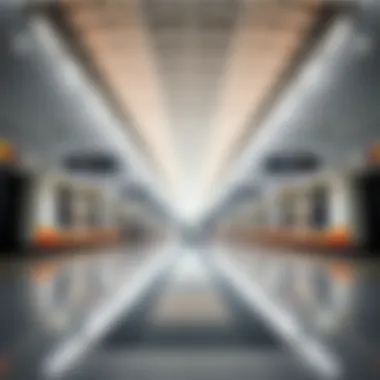

Feedback from Passengers
Feedback from passengers provides crucial insights into the overall functionality and user satisfaction of Jadaf Metro Station. Most passengers appreciate the station's spacious design and efficient service. Here are some common observations:
- Cleanliness and Maintenance: Many passengers commend the cleanliness of the station and its facilities, indicating regular upkeep and care from the authorities. This contributes significantly to the overall user experience, making the metro a preferred option for daily travel.
- Service Efficiency: Commuters often remark on the punctuality of train arrivals and the frequency of services, making it a reliable choice for those with tight schedules.
- Accessibility: However, there are areas for improvement; some users point out that wayfinding signage can be confusing for those unfamiliar with the area. Providing clearer instructions and multilingual support could enhance the experience for tourists and new residents alike.
It's clear that while Jadaf Metro Station offers a solid user experience, there’s always room for improvement. Continually gathering feedback and acting on it is essential in fostering satisfaction and ensuring the metro remains an integral part of Dubai's transport landscape.
Incorporating commuter feedback and understanding the demographics is key to enhancing the overall functionality of Jadaf Metro Station.
This user-centric approach can inspire future developments and contribute to a more robust transport system in the burgeoning city.
Environmental Considerations
Understanding the Environmental Considerations related to Jadaf Metro Station is essential for grasping its overall impact on Dubai's urban landscape. These elements not only speak to the station's operational efficiency but also its role within a larger framework of sustainability and urban planning. As the world leans increasingly towards green solutions, incorporating eco-friendly practices in public transport systems becomes paramount. Investments in sustainable transport options can lead to enhanced urban livability and decreased carbon footprints.
Sustainability Efforts
At the heart of Jadaf Metro Station's design is a commitment to sustainability. The station employs energy-efficient technologies that reduce its operational energy needs. For instance:
- LED Lighting: The use of LED lights throughout the station minimizes electricity consumption. Compared to traditional lighting, LEDs last significantly longer while providing superior illumination.
- Rainwater Harvesting: The station is equipped with systems that collect and utilize rainwater, thereby lowering dependency on municipal water sources for non-potable uses. This is particularly crucial in arid climate zones, where water scarcity is an enduring challenge.
- Green Energy Initiatives: Incorporation of solar panels on rooftop areas taps into emerging renewable energy sources that contribute to the station’s operational grid, promoting a cleaner environment.
These efforts not only enhance the station’s efficiency but also set a blueprint for future transport infrastructure projects in Dubai.
Integration with Green Spaces
A notable aspect of Jadaf Metro Station is its thoughtful integration with adjacent green spaces. The design encourages passengers to interact with nearby parks and recreational areas, thus promoting an active lifestyle. Here are some specific features relating to green space:
- Landscaped Areas: Surrounding the station are beautifully landscaped gardens that provide a pleasant respite for commuters. These areas are planted with native flora to support local biodiversity.
- Pedestrian Pathways: Well-designed walking paths facilitate access to these green spaces, encouraging people to leave their vehicles behind and opt for walking, which supports health and sustainability.
- Community Engagement: Local initiatives often organize events focused on ecology and conservation within these green areas. This not only fosters community spirit but also raises awareness about environmental issues.
“Jadaf Metro Station exemplifies how public transport can harmonize with nature, improving both connectivity and quality of life.”
Future Developments Around Jadaf Metro Station
As Jadaf Metro Station continues to enhance its role in Dubai's local transit framework, the conversation about its future developments becomes imperative. The station is not just a stop on the metro map; it’s a linchpin in a more extensive network aiming to revolutionize urban mobility. This section explores the upcoming infrastructure projects and the real estate trends that will likely shape the area surrounding Jadaf Metro Station.
Proposed Infrastructure Projects
The future of Jadaf Metro Station is buzzing with ambitious infrastructure projects designed to bolster connectivity and convenience for commuters. Several initiatives aim to expand and enhance the surrounding area, making it a true nexus for transportation.
- New Transit Links: Plans are underway for additional bus routes that connect directly to Jadaf Metro Station. This integration will allow commuters to switch seamlessly between modes of transport, cutting down on travel times and increasing the overall fluidity of movement within the city.
- Enhanced Facilities: Upgrades to the existing station facilities are on the horizon. This includes improved waiting areas, information kiosks, and better signage. The goal is to create a more welcoming and intuitive environment for commuters, encouraging them to choose public transport.
- Parking Structures: With the influx of visitors and commuters, adding multi-story parking facilities nearby is crucial. These structures will cater to not only metro users but also to those visiting adjacent commercial and recreational developments.
- Wider Access Roads: The roadways leading to Jadaf are getting a facelift. The upgrades will ease congestion, thereby improving access and the overall experience for drivers and pedestrians alike.
- Public Spaces Development: Increasing green spaces around the metro station is another potential development. Parks, plazas, and recreational areas will enhance urban living and encourage foot traffic, which indirectly benefits businesses in the area.
This mix of projects underlines a commitment to sustainable urban growth, transforming Jadaf Metro Station into more than just a transit point but rather a thriving community hub.
Real Estate Trends to Watch
The Jadaf area is positioned to see significant shifts in its real estate landscape in the following years as various factors intertwine. Developers and investors should keep a keen eye on these emerging trends:
- Residential Demand: With improved transport links and public amenities, demand for housing in Jadaf is likely to rise. This demand will not just be residential; mixed-use developments are becoming increasingly popular, combining living spaces with work environments and lifestyle amenities.
- Commercial Growth: Businesses are taking note of the expanding metro access. Expect a rise in commercial spaces appealing to retailers and services that benefit from heightened commuter traffic.
- Luxury Developments: In proximity to the metro station, we might witness a shift towards luxury residential developments. Such projects often attract both expatriates and locals seeking upscale living experiences with convenient transport options.
- Investment Opportunities: The ongoing upgrades and enhanced visibility may spur a new wave of investment in the area, particularly in real estate. Investors will likely see favorable returns due to the station’s connectivity and surrounding developments.
"Urban mobility doesn’t merely connect different parts of a city; it redefines communities and influences their growth trajectories."
Understanding these trends can provide critical insights for investors, developers, and urban planners eager to capitalize on what Jadaf Metro Station has to offer in terms of future development.
Safety and Security Measures
In the bustling atmosphere of Jadaf Metro Station, safety and security measures play a pivotal role in ensuring commuter confidence and peace of mind. The significance of these measures cannot be understated, as they not only protect individual passengers but also contribute to the overall integrity of Dubai's transport network. An efficient metro service thrives on the trust of the public, and robust safety protocols help establish a solid foundation for that trust.
Emergency Protocols
At Jadaf Metro Station, emergency protocols are meticulously developed and regularly rehearsed to prepare for any unexpected occurrences. Clear signage is prominently displayed throughout the station, guiding passengers to emergency exits and muster points, so no one feels disoriented in a time of need. Furthermore, staff members are trained extensively in crisis management to ensure they can respond appropriately.
- Regular Drills: Conducting emergency drills ensures that staff and first responders are familiar with procedures, making them quick and effective during real events.
- Public Education: Collaborating with agencies, the station often runs campaigns to educate the public about safety measures, like evacuation procedures or what to do in case of an emergency.
- Accessibility: Emergency protocols prioritize inclusivity. Provisions for persons with disabilities ensure that all passengers can evacuate the station efficiently.
By reinforcing emergency protocols, Jadaf Metro Station enhances safety and instills an atmosphere of assurance among its users.
Surveillance Systems
The surveillance systems in place at Jadaf Metro Station reflect the city's commitment to safety and modernity. These systems serve as both a deterrent and a rapid response mechanism to incidents, thereby boosting overall security.
- High-Definition Cameras: Equipped with cutting-edge technology, surveillance cameras monitor every corner of the station and its surroundings, enabling real-time monitoring and recording of incidents should they occur.
- AI Integration: Some surveillance systems are supported by AI features, which can identify unusual activities or behaviors, alerting staff to potential security risks before they escalate.
- Emergency Response Coordination: The surveillance system is not an isolated entity; it works in close cooperation with local law enforcement and emergency services to ensure swift action when necessary. For instance, in situations that require immediate assistance, surveillance feeds can be directly accessed by authorities, enabling them to assess the situation rapidly and without delay.
By investing in advanced surveillance systems, Jadaf Metro Station underscores its proactive approach to ensuring both safety and security for all passengers.
"Safety is not just a priority; it’s a commitment. Jadaf Metro Station exemplifies the standards we set for urban transport systems around the globe."
Overall, safety and security measures at Jadaf Metro Station encapsulate a comprehensive strategy that goes beyond basic precautions, aiming to foster an environment of safety that paves the way for a seamless commuting experience.
Economic Impact of Jadaf Metro Station
The economic implications of Jadaf Metro Station extend far beyond the confines of its architecture and daily commuters. This station not only acts as a vital link in Dubai's extensive metro network but also serves as a catalyst for economic growth in the surrounding areas. Understanding this impact is fundamental for investors, real estate developers, and urban planners alike. It's about seeing the big picture – how mobility fosters opportunity and shapes the urban landscape.
Job Creation and Employment Opportunities
With the establishment of Jadaf Metro Station, the immediate effect on job creation is notable. First and foremost, the construction phase alone employed thousands of workers, from engineers and architects to laborers on-site. This surge in employment opened a floodgate of opportunities, particularly in a region that thrives on growth and innovation.
But let’s not stop at just construction jobs. The operational phase of the metro station yields ongoing employment possibilities as well. Staff members are required for maintenance, security, and customer service roles, all contributing to a stable job market. The ripple effect can also be observed:
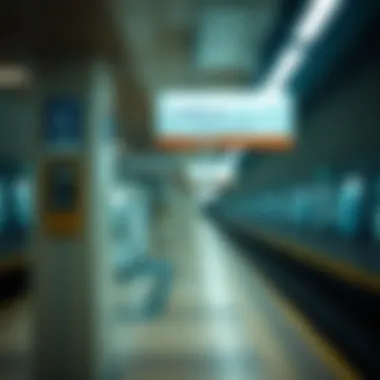
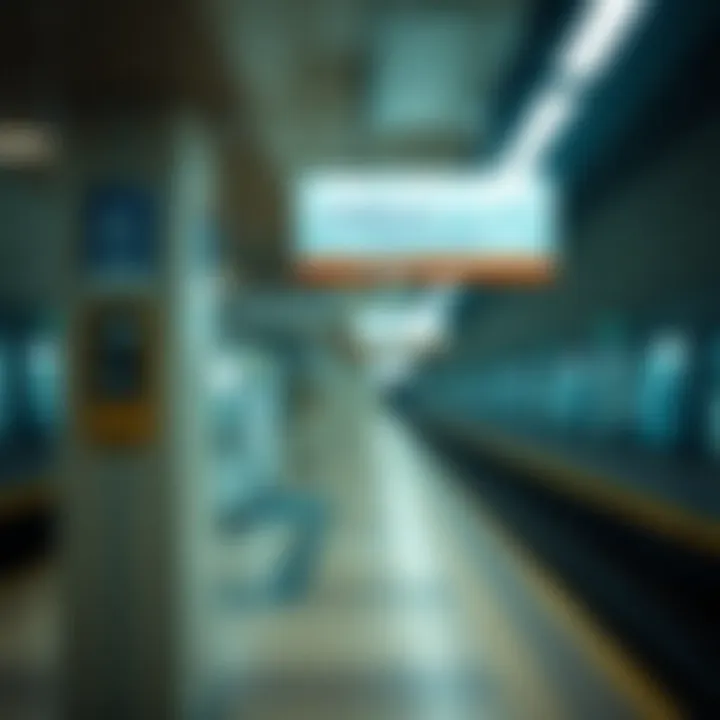
- Businesses Flourishing: Local cafés, shops, and service providers see increased patronage as commuters pass through the area, leading to greater hiring.
- Attracting Talent: New enterprises that depend on foot traffic are more likely to set up nearby, further enhancing job opportunities.
Overall, the station is not just a transit point; it's an employment hub that supports a variety of sectors, ensuring that the community remains vibrant and economically robust.
Contribution to Local Businesses
When analyzing Jadaf Metro Station's impact on local business, one cannot ignore how vital transit systems are to commercial success. Local enterprises benefit immensely from the influx of commuters, creating a symbiotic relationship between the metro station and regional businesses.
The convenience of having a metro stop nearby is a boon for retailers, as it increases foot traffic. Here’s how Jadaf Metro Station plays a pivotal role:
- Increased Visibility: Businesses near the station gain visibility among a diverse group of potential customers.
- Better Accessibility: Residents and tourists alike find it far easier to access these services, leading to a boost in sales.
Moreover, the presence of a metro station enhances consumer confidence. As public transport becomes more efficient, customers tend to frequent areas that are conveniently connected. This is particularly true for:
- Restaurants and Cafés: As commuters look for quick meals or coffee, local eateries see a significant rise in business hours.
- Retail Stores: Shops catering to varying customer needs, from clothing to groceries, experience surges in sales.
"A reliable transit system serves as the backbone of economically sound communities, directly correlating to an uptick in local business performance."
For more on the economic analysis of transit systems, you can explore:
Prospective investors should pay close attention to these dynamics as they continue to unfold around Jadaf Metro Station.
Cultural and Social Aspects of the Jadaf Area
Examining the cultural and social aspects of the Jadaf area is crucial in understanding not only the significance of the Jadaf Metro Station but also its larger connection to the community. Jadaf is more than just a transit point; it embodies the cultural mesh of Dubai’s rich heritage and modern advancements. The area reflects a lively community that values both tradition and progress, creating a fascinating juxtaposition.
Local Events and Festivals
Jadaf witnesses a vibrant array of local events and festivals that engage both residents and visitors. One such event is the Dubai International Boat Show, held annually, showcasing luxury yachts and marine innovations. This event doesn't just celebrate the maritime industry; it also emphasizes Dubai's commitment to luxury and advancement. The various exhibits draw local and international visitors, contributing to both cultural exchange and economic activity.
Furthermore, Eid al-Fitr celebrations in the vicinity are a visual spectacle, where colorful decorations adorn the streets and local parks. Community gatherings during these times foster a strong sense of belonging and celebration of shared traditions. Local mosques and community centers often organize events during these festivals, which are open to the public, inviting a diverse mix of individuals to participate in festive activities.
From food festivals showcasing cuisine from around the world to art fairs that spotlight local talent, Jadaf’s social calendar is both inclusive and engaging. These events create a strong sense of community spirit while also serving as a magnet for tourism, positively affecting local business.
Art and Public Installations
Art and public installations in Jadaf are prime examples of how creativity intertwines with urban living. The area boasts several murals and sculptures that echo the cultures of the Middle East while embracing modern artistic expressions. These installations not only brighten up the urban landscape but also serve as conversation starters for locals and tourists alike.
One prominent installation, the Eternal Flame of Peace, serves as a tribute to the unity and resilience of the community. It's not just a piece of art; it's a gathering point for people who come to appreciate the shared history and aspirations tied to it. Such installations often pop up near the metro station, providing a perfect backdrop for social gatherings or community-led activities.
Moreover, accessibility to public art makes Jadaf an inviting space for art enthusiasts. The interplay of sentiment and craftsmanship invites conversations and reflections about culture, identity, and history. The metro station itself acts as a conduit for these artistic expressions, with people discovering art on their daily commutes.
In summary, the cultural and social vitality of Jadaf transforms it into a dynamic area, where local events and artistic expressions intertwine to enrich community life and foster economic growth. This makes Jadaf not just a stop on a metro line, but a pivotal part of Dubai's cultural fabric.
Transport Options at Jadaf Metro Station
Transport options at Jadaf Metro Station are crucial in understanding how this pivotal transit hub integrates into the broader transport network of Dubai. Jadaf Metro Station is not just a stop on the map; it represents a point where various modes of transport converge, facilitating seamless connectivity for all commuters. The strategic placement of this station makes it a linchpin for residents and visitors alike.
The availability of diverse transport options significantly enhances accessibility, making it easier for users to navigate the city. This certainly bodes well for those involved in real estate, transport, and urban planning as it impacts property value and commuter flow.
Connecting Bus Routes
Connecting bus routes serve as an essential extension of the metro service at Jadaf Metro Station. Public buses crisscross the city, making it simpler for commuters to bridge the gaps that the metro line may not cover directly. These routes are designed to complement the metro service, fortifying the principle of first and last mile connectivity.
Notable routes include:
- Bus Route 27: Connecting to Al Jaddaf and Dubai Festival City, facilitating retail and leisure opportunities.
- Bus Route 55: Linking Jadaf with nearby residential areas, making it easier for residents to reach the metro.
The frequency of these services ensures minimal waiting times. This regularity encourages users who might otherwise opt for private transport to consider public transport instead. It's a win-win, improving traffic conditions while promoting a more sustainable transport model. The well-planned schedules of these buses cater to both the morning rush hours and late-night commuters.
Taxis and Ride-Sharing Services
In addition to bus routes, taxis and ride-sharing services like Uber and Careem provide additional layers of convenience for travelers using Jadaf Metro Station. These options are especially useful for those who prioritize flexibility and the comfort of door-to-door service.
The taxi stand located right outside the metro station acts as an instant access point for anyone in a hurry or those traveling with heavy luggage. Notably,
- Taxis operate 24/7, ensuring that early risers and night owls can count on this transport method at any hour.
- Ride-sharing services are often just a tap away, offering competitive pricing, especially when factors such as surge pricing are considered.
"Transport options at Jadaf Metro Station don’t just serve the movement; they define the experience of urban living in Dubai."
Both taxis and ride-sharing enhance the user experience significantly, particularly for the business crowd looking to make smooth transitions between meetings and events. Moreover, the integration of these services with the metro system helps create a hassle-free commuting routine, making Jadaf not just a stop but an essential aspect of the transport ecosystem in Dubai.
Challenges Faced by Jadaf Metro Station
Navigating the dynamic landscape of urban transport comes with its fair share of hurdles. The Jadaf Metro Station, while a significant component of Dubai's metro network, faces an array of challenges worth dissecting. Understanding these obstacles is crucial, as they reveal not just the limitations of the station, but also highlight areas where improvements can pave the way for a more efficient transport experience for commuters.
Crowd Management Issues
Crowd management at Jadaf Metro Station poses a notable challenge, particularly during peak hours. With the station servicing a growing number of passengers, the influx can sometimes resemble a swarm of bees leaving the hive. Commuters often find themselves jockeying for position, especially during rush hours. This situation raises several considerations:
- Safety Concerns: High traffic volumes can lead to potentially hazardous situations. In areas where space is limited, a lack of proper crowd control can result in accidents. Emergency services might struggle to navigate through densely packed crowds in the event of an incident.
- Experience Quality: A hectic environment frustrates passengers. Those who depend on the metro for daily commutes might find their experiences marred by long lines and a rush to board. Their annoyance can lead to negative perceptions of the metro service overall.
- Flow Management: Effective crowd management strategies need to be implemented to ensure smooth passenger flow. Utilizing signage to direct commuters, employing trained staff during busy hours, and innovative solutions can relieve congestion.
Infrastructure Limitations
While Jadaf Metro Station is positioned strategically within Dubai’s transport matrix, its infrastructure is not without shortcomings. Understanding these limitations is essential for future developments and investments:
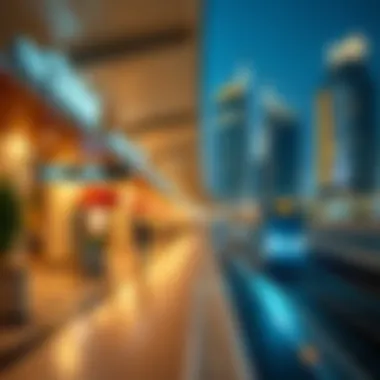
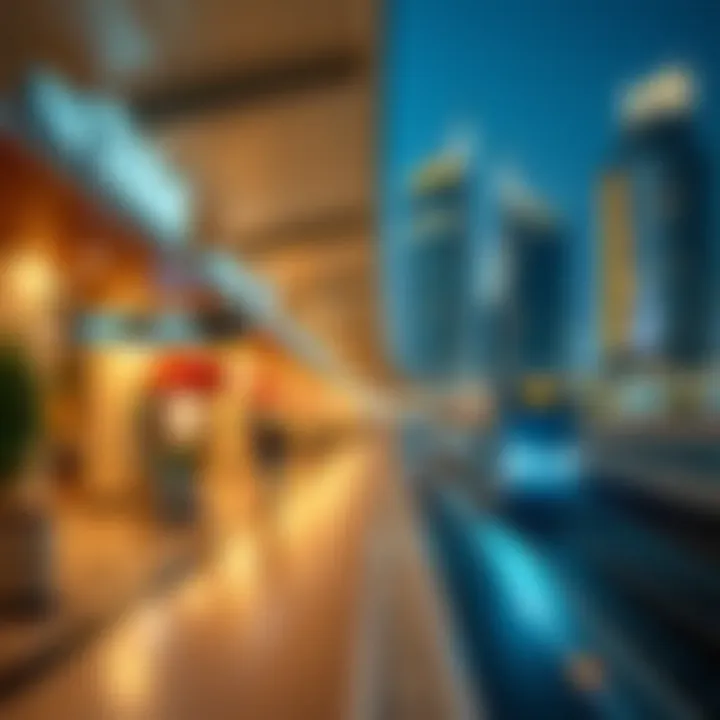
- Outdated Facilities: Some facilities might require upgrades. For instance, escalators and elevators need to function optimally to aid commuters with disabilities or those carrying heavy luggage. If these facilities are out of service, they can create bottlenecks that frustrate passengers.
- Capacity Constraints: Currently, the station may lack the necessary capacity to handle future demand. As Dubai continues to expand, the existing infrastructure must evolve in tandem. If Jadaf Metro Station can't accommodate increased passenger numbers, it could hinder the overall effectiveness of the metro system.
- Maintenance and Upgrades: Regular maintenance is critical for smooth operations. However, limited funding or planning for timely upgrades can lead to deteriorating conditions. An infrastructure that falls into disrepair will undoubtedly affect daily operations and user satisfaction.
In summation, while Jadaf Metro Station serves as a pivotal link in Dubai's transport chain, the challenges it faces underline the need for ongoing assessment and development. Tackling crowd management and infrastructure limitations is integral to enhancing the commuter experience and ensuring the station can continue to support an expanding urban population.
"Sustaining effective public transport solutions is not just about construction; it's about anticipating the evolving needs of our communities."
For further insights on transit issues and infrastructure, consider visiting Wikipedia or reviewing studies from credible sources like Britannica.
Understanding the obstacles at Jadaf is a step towards fully leveraging its potential and integrating it into a seamless transport network across Dubai.
Case Studies of Successful Transit-Oriented Developments
Transit-oriented developments, or TODs, have become increasingly important in urban planning, offering a guideline on how to integrate transportation infrastructure with residential and commercial endeavors. This section delves into case studies that illustrate successful implementations of TOD principles and how they can inform the ongoing evolution of Jadaf Metro Station.
International Examples
Many cities worldwide have enacted transit-oriented developments that showcase both innovation and efficiency in public transport integration. Here are a few notable international examples:
1. Vancouver, Canada: The Olympic Village
The Olympic Village, originally built for the 2010 Winter Olympics, is an exemplary model of transit-oriented development. Located just steps away from public transport options like the Canada Line SkyTrain, this development fosters a compact community where residents benefit from easy access to the light rail system. As a result, there's a notable decrease in reliance on personal vehicles, highlighting the potential of TODs to support sustainable living.
2. Paris, France: La éfense
La Défense is a major business district situated near the Paris Métro and the RER commuter trains. This area highlights the synergy between office spaces and public transport. The emphasis on high-density development around transit hubs ensures that commuting into the heart of Paris remains convenient for both workers and residents, promoting economic activity and reducing congestion.
3. Portland, Oregon, USA: Pearl District
The Pearl District epitomizes a revitalized urban space centered around the Max Light Rail. Once an industrial area, it has transformed into a vibrant community with housing, shops, and parks, all within easy reach of public transit. The heavy investment in pedestrian-friendly pathways and bike lanes further emphasizes the importance of integrating transport options with everyday life.
Lessons for Jadaf
From the case studies above, we glean several critical lessons that can be applied to the ongoing developments surrounding Jadaf Metro Station:
- Mix of Use: Developing mixed-use environments encourages a community-oriented atmosphere. This can be particularly beneficial in Jadaf, where potential residential and commercial spaces can enhance the overall urban appeal and access to amenities.
- Accessibility: Each successful case showcases the importance of convenient transportation options. Jadaf should prioritize seamless connections with its metro services, making it easier for commuters and visitors to navigate the wider urban landscape.
- Sustainability: TODs often result in lower carbon footprints. By promoting energy-efficient buildings and public transport, Jadaf can align itself with global sustainability goals, appealing to environmentally conscious investors and residents alike.
- Community Engagement: Local involvement in planning phases can lead to developments that meet the actual needs and desires of the community. Encouraging feedback and ideas from residents and local business owners will strengthen the connection residents feel to the area.
Investing in transit-oriented development not only enhances connectivity but also shapes the social fabric of urban environments. This is crucial for Jadaf as it evolves as a transportation hub.
By analyzing these successful transit-oriented developments, Jadaf Metro Station can adopt strategies that not only advance its infrastructure but also enrich the local community, paving the way for a vibrant, interconnected urban space.
Public Perception of Metro Services
Understanding public perception of metro services serves as a pivotal element when exploring the practical functions of Jadaf Metro Station. This aspect not only influences daily commuters but also affects broader social attitudes toward public transport systems. In Dubai, where rapid urban development meets a growing population, the metro is essential. The perception of its efficiency, safety, and usefulness can sway potential users. Positive sentiments can bolster ridership, while negative impressions may deter people from embracing this mode of transport.
Compared to Other Transport Modes
When comparing metro services like those at Jadaf Station to other modes of transportation, several factors come into play. Firstly, the cost efficiency of using the metro versus taxis or personal vehicles often turns heads. The fare structures in Dubai are attractive, especially for daily travelers. On the flip side, the convenience of directly commuting in a car or taxi cannot be overlooked. Here’s a closer look at how these modes stack up against each other:
- Metro: Affordable fares; reliable schedules; minimal environmental impact.
- Taxis: Higher costs; door-to-door convenience; potential delays due to traffic.
- Personal Vehicles: Complete flexibility; parking challenges; more carbon footprint.
Each transport mode has its pros and cons. Understanding where Jadaf fits in the broader context can help identify areas for improvement and opportunities for promotion.
Surveys and Studies
Numerous surveys and studies provide insight into public sentiment regarding metro services. For instance, recent surveys reflected that around 72% of users considered the metro services at Jadaf to be satisfactory. This rate of approval indicates a significant level of acceptance among its users. Going deeper into the findings, several factors influenced these perceptions:
- Service Frequency: Commuters appreciate the regular intervals between trains, which reduces waiting times.
- Cleanliness: A clean environment positively correlates with user satisfaction, and Jadaf station's upkeep plays a crucial role here.
- Safety Measures: Many respondents highlighted the presence of security personnel and well-maintained surveillance systems that enhance their sense of safety.
- Comfort during Peak Hours: The crowd management strategies deployed during rush hours received mixed reviews. While some feel adequate measures are in place, others call for enhancements, especially regarding seating and space.
"Understanding commuters’ behaviors and sentiments is not a mere academic exercise; it’s crucial for informed policy decisions and for garnering public support for transport initiatives."
Integration with Future Smart Transport Initiatives
As urban landscapes evolve, so too must the systems that facilitate mobility within them. The integration of smart transport initiatives with the Jadaf Metro Station serves as a pivotal point in enhancing mobility not just in Dubai, but as a model for cities worldwide. By adopting smart transport initiatives, Jadaf Metro Station becomes not merely a stop on the metro but a dynamic hub that adapts to the needs of commuters in real-time.
Smart Ticketing Systems
Smart ticketing systems are revolutionizing how urban transport is funded and used. By allowing passengers to pay for fares through mobile apps or contactless cards, these systems streamline the entire boarding process. For instance, using a smartphone application, commuters can load their ride credits, check balances, and access travel history—all at their fingertips. This increase in convenience not only enhances the commuter’s experience but also reduces congestion at ticket counters, allowing for a smoother flow at the station.
An example of an effective implementation could be a collaboration with local banks to offer promotional fare discounts for users of specific credit cards. Such partnerships will encourage more people to utilize public transport over private vehicles, aligning with Dubai’s sustainability goals. The convenience brought by smart ticketing also extends to real-time updates about fare changes, transit routes, and service disruptions.
Data Analytics for Commuter Flow
Harnessing data analytics is another cornerstone of future transport initiatives at Jadaf Metro Station. By collecting and analyzing commuter data, transport officials can identify travel patterns and peak hours. This information can be invaluable in adjusting services, such as increasing train frequency during rush hours or implementing targeted marketing campaigns to promote off-peak travel.
Moreover, through modern data analysis tools, one could envision the development of predictive algorithms. These algorithms could forecast commuter flow based on historical data and current trends, enabling authorities to make proactive adjustments instead of merely reactive measures.
An important aspect to consider is the privacy of riders. Effective implementation must include transparent data practices, ensuring that users understand how their information is being utilized without compromising their personal data.
"Integrating data analytics in transport systems allows cities to become more adaptive, responsive, and ultimately, user-friendly."
Ending: The Role of Jadaf Metro Station in Enhancing Urban Mobility
The Jadaf Metro Station stands out as a pivotal component of Dubai's urban landscape, influencing not just transportation but the very fabric of the city. Its role goes beyond being a mere point on a transport map; it serves as a vital link, connecting various neighborhoods, cultures, and economic activities. This kind of connectivity is essential in a rapidly growing city where time is of the essence.
Summary of Key Insights
- Enhanced Accessibility: Jadaf Metro Station provides seamless access to key areas of Dubai. It significantly shortens commute times, making it easier for residents and visitors to travel without relying solely on cars. This shift encourages more sustainable modes of transportation.
- Economic Development: The proximity of the metro station to residential and commercial areas has been a catalyst for growth in real estate. Property values in the vicinity are on the rise, reflecting the desirability of living close to public transport.
- Cultural Exchange: Jadaf is not just a transportation hub; it’s a melting pot of cultures. The interaction of diverse commuter demographics enriches the social tapestry of the area. Local events and public art installations that promote cultural dialogue have found a foothold here, further elevating its significance.
- Environmental Impact: Encouraging public transportation usage through the Jadaf Metro Station aids in mitigating traffic congestion and reducing carbon emissions, aligning with Dubai's sustainability goals.
Future Prospects for Public Transport in Dubai
Looking ahead, the potential for Jadaf Metro Station to influence public transport in Dubai is promising. With ongoing advancements in technology and infrastructure, the vision for a smarter transport network is within reach. Strategies to consider include:
- Smart Ticketing Systems: The introduction of contactless ticketing could make the commuting experience more efficient, reducing wait times and lines.
- Expansion of Services: Future expansions of the metro line could enhance connectivity even further, linking Jadaf with other promising areas of development.
- Enhanced Data Analytics: Implementing sophisticated data analysis to understand commuter patterns can help in optimizing services and managing capacity, ultimately leading to an improved user experience.
Given the significant role that Jadaf Metro Station plays today, its evolution is key to understanding how Dubai will address its urban transport challenges going forward. As the station grows in capability, it stands to shape the future mobility landscape of this dynamic city.
